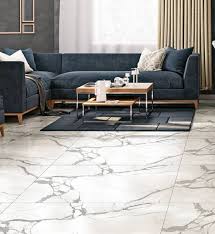Moroccan tiles, known for their vibrant colors, intricate patterns, and cultural significance, have captivated the design world for centuries. With a rich history and a unique aesthetic that blends art, architecture, and craftsmanship, these tiles continue to inspire interior design and architecture worldwide. In this article, we will explore the history, design characteristics, and contemporary use of Moroccan tile designs in modern spaces.
A Brief History of Moroccan Tiles
Moroccan tile design has its roots in the country’s diverse and rich cultural heritage. The influences of various civilizations—Berber, Arab, Andalusian, and Moorish—have all contributed to the development of Moroccan tilework, which is often referred to as “zellige” (pronounced “zel-lij”). The term “zellige” refers to hand-cut mosaic tiles made of glazed ceramic, which are arranged to form intricate, geometric patterns.
The tradition of tile making in Morocco dates back to the 10th century, with many of the oldest examples found in the stunning palaces, mosques, and medinas of cities like Fes, Marrakesh, and Rabat. The geometric designs, vibrant colors, and artistry of Moroccan tiles were initially used to decorate religious and royal buildings. The craftsmanship involved in the making of zellige tiles is a testament to Morocco’s long-standing tradition of artistry and dedication to beauty.
The Distinctive Features of Moroccan Tile Designs
Moroccan tile designs stand out for several key characteristics that make them immediately recognizable:
- Geometric Patterns
One of the defining features of Moroccan tile design is the use of complex geometric patterns. These patterns, often based on symmetrical shapes like stars, circles, and diamonds, create a sense of order and balance. The use of geometry is not only an aesthetic choice but also a symbolic one, representing infinity and the unity of all things in the universe. - Vibrant Colors
Moroccan tiles are known for their bold and vibrant color palette. Rich shades of cobalt blue, emerald green, deep red, and golden yellow dominate the design, giving these tiles a striking and energetic quality. These colors are often complemented by white or neutral backgrounds, allowing the bold patterns to take center stage. - Intricate Detailing
Each tile is meticulously hand-cut and shaped, creating a distinctive finish. The edges of each tile are uneven, which contributes to the overall texture and charm of the design. The use of small tiles arranged in repeating patterns creates a sense of depth and complexity. - Symbolism and Cultural Significance
In Moroccan tilework, certain patterns and colors often carry symbolic meanings. For example, the color blue is associated with spirituality and peace, while green represents fertility and nature. The use of intricate motifs, such as arabesques and floral patterns, often draws upon Islamic art’s prohibition of representing living creatures, instead celebrating the beauty of abstract and geometric forms.
Moroccan Tiles in Modern Interiors
Although Moroccan tile designs have ancient origins, they are highly sought after in modern interior design due to their unique aesthetic and ability to transform any space. Here are some popular ways to incorporate Moroccan tiles into contemporary design:
- Kitchen Backsplashes
A Moroccan tile backsplash is an excellent way to add a touch of color and culture to a kitchen. Whether you opt for a bold pattern or a more subdued color scheme, Moroccan tiles create a visually striking focal point above countertops and stoves. - Bathrooms
Moroccan tiles are perfect for bathrooms, where they can be used to create a luxurious, spa-like atmosphere. The intricate patterns and vibrant colors pair beautifully with modern fixtures and minimalist decor, adding warmth and character to what could otherwise be a sterile environment. - Floors and Walls
Moroccan tiles can be used on both floors and walls to create a continuous design element throughout a room. Whether used to cover an entire floor in a living room or as a feature wall in a hallway, the tiles bring a sense of warmth, texture, and exotic flair. - Outdoor Spaces
Moroccan tiles are also ideal for outdoor spaces like patios, gardens, and courtyards. The durable nature of ceramic tiles makes them perfect for withstanding the elements, and the colorful patterns can enhance the ambiance of alfresco dining or lounging areas. - Accent Pieces
For a subtler approach, Moroccan tiles can be used as accents. A single tile or small section of a wall can evoke the same sense of artistry without overwhelming the entire room. Moroccan-style tile trays, tabletops, and mirrors are also popular design choices.
Craftsmanship and Sustainability
The process of creating Moroccan tiles is labor-intensive, requiring skill and precision. Master artisans use a combination of traditional techniques and modern tools to shape, glaze, and fire the tiles, ensuring a high level of craftsmanship. The tiles are often produced in small batches, with each tile reflecting the individual touch of the artisan.
In recent years, there has been an increasing focus on sustainability in the production of Moroccan tiles. Many artisans and manufacturers are using eco-friendly materials, such as natural clay and non-toxic glazes, to minimize their environmental impact. Additionally, the handcrafting process results in minimal waste compared to mass-produced tile options.
Conclusion
Moroccan tiles are a timeless element of design, combining beauty, craftsmanship, and cultural richness. With their bold colors, geometric patterns, and symbolic meanings, they continue to inspire and enhance spaces in modern interiors. Whether used in small accents or as large-scale features, Moroccan tiles bring a sense of warmth, exoticism, and sophistication to any environment. Their enduring appeal reflects not only their aesthetic beauty but also their ability to tell the story of a rich cultural heritage.

























